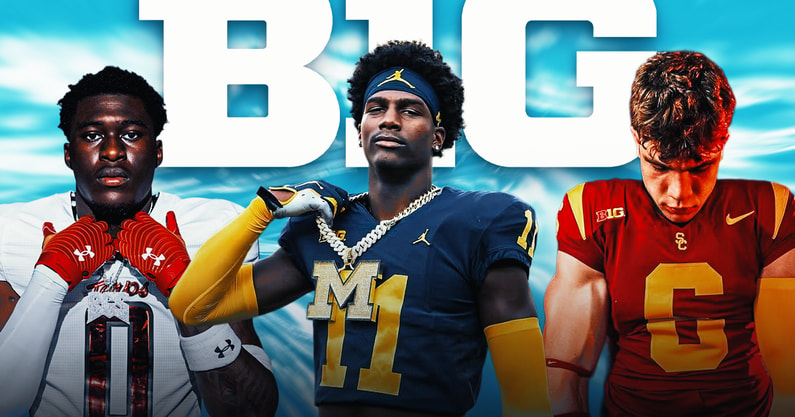The future of Big Ten football is already beginning to take shape—and the debut of the 2026 Rivals300 rankings offers a promising glimpse at the conference’s next wave of elite talent. With multiple blue-chip prospects already committed, Big Ten programs are flexing early recruiting muscle as they prepare for a new era of expanded membership and heightened competition.
Leading the charge is Ohio State, which once again sits at the forefront of national recruiting efforts. The Buckeyes boast a pair of top-50 commits in the 2026 class, including five-star wide receiver Chris Henry Jr., who checks in at No. 6 overall in the inaugural Rivals300. The son of the late NFL receiver Chris Henry, Henry Jr. is a 6-foot-5 pass-catching nightmare with elite body control and acceleration. His commitment gives Ohio State a potential future WR1 in the mold of Marvin Harrison Jr.—and sends a strong message that Brian Hartline’s wide receiver factory shows no signs of slowing down.
Ohio State also holds a pledge from quarterback Faizon Brandon (No. 47 overall), one of the top dual-threat passers in the class. The North Carolina native has showcased advanced pocket presence and a live arm, and his ability to make plays off-schedule makes him a perfect fit in Ryan Day’s offensive scheme.
Penn State, too, has planted its flag early in the 2026 cycle. The Nittany Lions have a commitment from linebacker DJ McClary, who ranks No. 79 in the Rivals300. McClary is a hard-hitting, sideline-to-sideline defender with tremendous instincts. He’s already drawing comparisons to Penn State greats like Micah Parsons and Abdul Carter—and could be the centerpiece of Manny Diaz’s defense for years to come.
The University of Michigan, fresh off a national championship run in 2023, isn’t far behind. The Wolverines have locked in offensive lineman Logan Bennett, who sits just outside the top 100 but is climbing fast. At 6-foot-6 and 305 pounds, Bennett is a mauler in the run game with quick feet and a nasty streak. He embodies the physical brand of football Michigan prides itself on—and could be a foundational piece up front.
With the Big Ten expanding to include USC, UCLA, Oregon, and Washington in 2024, the recruiting battlefield has grown coast to coast. That makes these early wins all the more important.
Nebraska, for example, made a major statement with the commitment of tight end Tyson Terry. A local product from Omaha, Terry is ranked No. 183 and is seen as one of the top tight ends in the Midwest. Head coach Matt Rhule has emphasized the importance of keeping top in-state talent home—and landing Terry is a strong step in that direction.
Maryland has also found early success with defensive back Evan Taylor, who cracks the top 250. The DMV area has long been a talent-rich region, and Taylor’s commitment shows that Mike Locksley’s staff continues to win key battles on the East Coast.
As it stands, Big Ten programs have over 20 commits in the initial Rivals300 rankings, including several with five-star potential. That early haul is especially impressive considering the 2026 class remains in its infancy, with many prospects just beginning their varsity careers and official visits.
Still, the trajectory is clear: The Big Ten is stacking talent with the intention of competing not just within the conference, but at the national level. With elite skill players, franchise quarterbacks, and dominant trench prospects already in the fold, the 2026 cycle could be a foundational class for the next decade of Big Ten football.
And if the early Rivals300 is any indication, the race for supremacy in the new-look Big Ten is just heating up.
